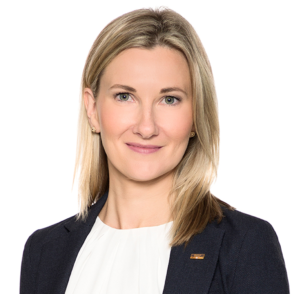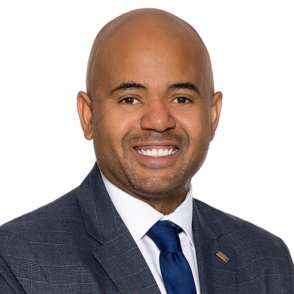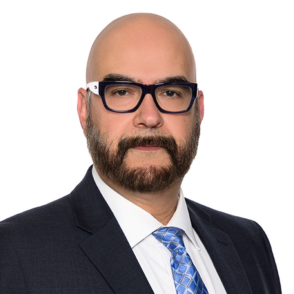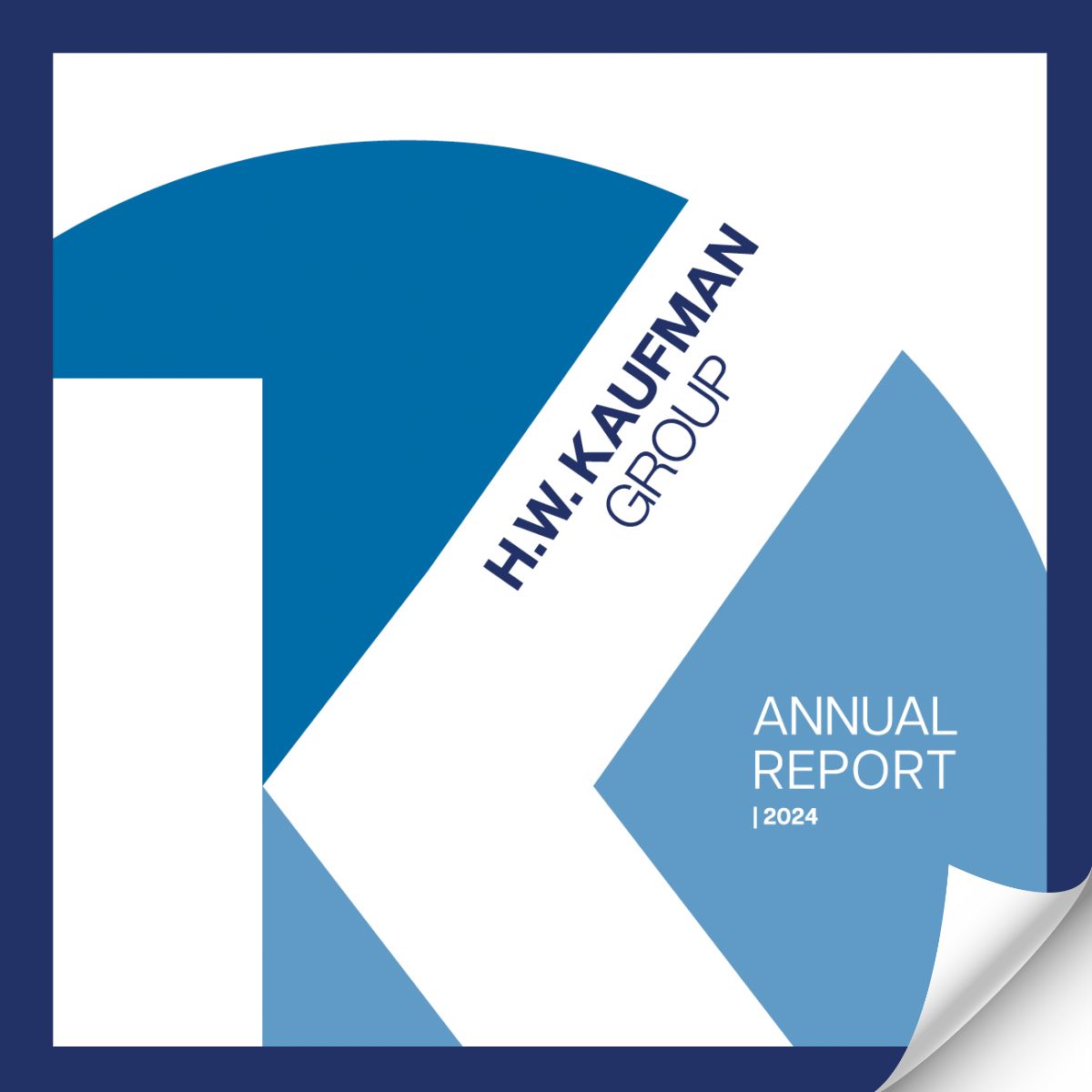Last quarter, we indicated the Property & Casualty (P&C) market had reached a relative level of equilibrium not seen in several years. We defined this as an environment where rates and capacity were relatively stable, and carriers could be profitable.
The gradual and consistent shift in business from the admitted to the Excess & Surplus (E&S) market is a transformation that is here to stay, shaping the future of the industry. We anticipate the percentage of policies handled by non-admitted carriers will continue to rise.
KEY TAKEAWAYS:
- The gradual shift of business to non-admitted markets, a trend with significant growth potential, will continue for the foreseeable future.
- A growing percentage of catastrophic (CAT) events are defined as convective storms and wildfires, which are harder to predict than hurricanes.
- Hurricanes Helene and Milton caused an estimated more than $60 billion in damages.
- Liability concerns are expected to disrupt the current equilibrium in the insurance market by 2025.
- Certain Liability classes, such as Auto, Habitational, and Liquor, present considerable challenges due to the high risks associated with them.
- Dynamic pricing is becoming more prevalent, especially in Personal Insurance.
ACCESS A PDF VERSION OF THIS REPORT HERE
There are several compelling reasons behind this shift. E&S carriers, with their diverse options and greater flexibility, are meeting the evolving needs of the insureds. Their ability to cover hard-to-place risks further solidifies their position in the market.
Hurricanes
What had started as a slow hurricane season took a drastic turn in late September. CoreLogic calculates that Hurricane Helene caused between $30.5 billion and $47.5 billion in total wind and flood losses across 16 states. Other estimates suggest slightly lower numbers, but it is anticipated that the total will still exceed $10 billion. Hurricane Milton is estimated to have resulted in insured losses of $30 billion to $50 billion according to analysts from Fitch Ratings.
As of October 8, more than 200 people tragically died from the impact of Hurricane Helene, making it the deadliest hurricane to hit the U.S. mainland since Hurricane Katrina in 2005. One of the reasons for the tragic loss of life was the storm’s unexpected nature. Some of the most catastrophic flooding occurred miles inland from where the storm pushed ashore, all the way to Asheville, North Carolina, which is approximately 400 miles from the Atlantic Ocean. This serves as a reminder of the growing impact these storms have on regions that historically do not experience their full force, as well as the significant uncertainty they can bring.
While it is too early to say what the impact of these hurricanes may have on the industry, it is anticipated that they will have an impact on the all-important upcoming January 1 reinsurance renewals.
Wildfires
The number of wildfires has increased in recent years due to various factors, including climate change. Statistics from the National Interagency Fire Center indicate that between January 1 and September 12 of this year, 36,398 fires have burned more than 6.9 million acres.
That volume is significant, but one reason the number of claims has increased is that more people want to live in more remote places than ever before. Gains in technology, such as broadband internet and mobile phone coverage, have made it easier to live high atop a mountain in Colorado or deep in the woods of Oregon.
Many of these remote areas have a historical prevalence of wildfires, a fact that was not widely known due to the absence of buildings and insurable losses in such regions.
Severe convective storms
Severe convective storms are generally smaller in scope and more localized. They include tornadoes, straight-line winds, hail and heavy thunderstorms. They are becoming more common, and the financial impact is noticeable.
Global insured losses from natural catastrophes totaled $60 billion in the first half of 2024, 62 percent above the 10-year average and equal to last year’s first-half losses, according to a report in September from Swiss Reinsurance Co. Ltd. (Swiss Re). Losses were driven by severe convective storms, which accounted for $42 billion, or 70 percent, of the total. The U.S. had 12 severe convective storm outbreaks that each caused $1 billion or more in insured damages in the first six months of the year alone, according to an August 2024 article in Business Insurance.
These convective storms damage building roofs and automobiles. They cause trees to fall on any number of insured items. One of the challenges with such storms is that they are rarely predictable and, therefore, difficult for underwriters to model. This is another reason more business is moving into the E&S space, which can offer more capacity for related coverage.
Liability concerns
Business Insurance indicated in early September that reinsurers remain “wary” of several sectors, including Liability risks, for good reason. While modeling has improved in the Property sector, it does not help much with Liability consideration. Third-party litigation funding continues to impact the industry with the potential for larger, more aggressive legal action against carriers, given the amount of money behind certain claims-related lawsuits.
A couple of years ago, much of the industry buzz in P&C was around CAT and the impact of coastal storms. As we have seen recently these concerns remain. However, there is increasingly more discussion about third-party litigation funding, nuclear verdicts and other non-CAT issues that are challenging carriers’ outlook to outpace loss cost trends. Social inflation has increased U.S. Liability claims by 57 percent in the last decade, according to a September 7 report from Swiss Re. Additionally, the report notes the impact of Casualty claims growth is expected to outweigh the industry earnings benefit from higher interest rates in the next couple of years.
We expect such Liability concerns will only increase in 2025. Partially tied to this concept is the increase in specialty risks as well. Events like the waterway accident that caused the Francis Scott Key Bridge to collapse in the Port of Baltimore in March and the CrowdStrike IT outage in July that crashed millions of global systems have reinforced the notion that Liability might be the greater threat to this equilibrium.
CBS News reported on September 21 that the U.S. Justice Department is seeking to recover more than $100 million the government spent to clear the underwater debris and reopen the Port of Baltimore. According to a July 26 TechTarget article, insurers estimate the CrowdStrike outage will cost U.S. Fortune 500 companies $5.4 billion. These significant Liability claims provide an idea for what future unexpected accidents may cost.
Liability subsectors in a hard market:
- Habitational – Exposure is higher for apartments, condos, hotels and motels because of the volatility of societal issues like violence and the use of weapons. Owners of rental properties also face challenges because of their lack of control over short-term tenants’ actions, despite the escrow they may collect on up-front damage deductibles. Many admitted markets are staying away from covering these types of properties.
- Liquor – All it takes is one situation where a driver had too much to drink for financial destruction, and possibly the loss of life, to occur.
- Auto – Whether Personal or Commercial, Auto claims are on the rise. Many accidents can involve multiple-party policies and an aggressive plaintiff’s bar will find the deep pockets involved in an accident that have money. Auto liability policies are increasingly challenging.
Corporate, governmental, utility and related fleets are also challenging. Those who make documented investments in diligent training and hiring practices and invest in state-of-the-art telematics data are at an advantage because of the perceived lower risk. However, those actions are expensive and can be difficult for smaller organizations to afford. Without such attention to training, hiring and telematics, many organizations may find their fleet largely uninsurable in admitted markets.
These market dynamics, combined with insured preferences for multiple options and other factors, are expected to increase the E&S market share in the P&C space. S&P Global reported in June 2024 that the U.S. E&S market now constitutes 9.2 percent of the country’s total direct premiums written in 2023, up from the 5.2 percent market share for 2018. The report also indicated that the majority of E&S premiums last year were concentrated on Liability and Casualty coverages, which accounted for 52.5 percent of the total. Property made up 31.7 percent of 2023 E&S premiums, while Commercial Auto represented 5.4 percent.
While growth slowed year-over-year from 2022 to 2023, we expect market share growth to remain steady in the near-term.
RATE
Any discussion with rates must be prefaced with the reality that each individual situation may differ. But generally speaking, many insureds should see flat to single-digit rate increases for the rest of this year and in 2025. Clients operating in any of the stressed spaces listed above, or those with poor loss experience, are more likely to see double-digit increases, especially in the Automotive sector.
Rates on Commercial policies are stabilizing, generally speaking. However, we are seeing an increasing number of Personal carriers using dynamic pricing to assist in identifying the right rate for the risk at any given time. This will cause significant fluctuations in short periods, which highlights the importance of broker and agent expertise, helping secure the best alternative possible. Personal Insurance carriers have often increased their rates annually at a modest rate based on the Consumer Price Index, inflation and other standard factors. However, that often-flat rate applied equally against an entire portfolio is being slowly replaced by real time dynamic pricing that takes those factors plus much more into consideration.
CAPACITY
Capacity remains largely available for most areas. As with rates, capacity is challenged in the stressed sectors mentioned above; however, Burns & Wilcox can help most brokers and agents find solutions for their clients, including those who may have filed recent claims. Some of those more difficult requests may require layering and/or multiple carriers to secure the limits needed to protect an insured’s assets fully, but a solution is generally possible.
TERMS & CONDITIONS (T&C)
Policy terms and conditions remain at the forefront of market discipline with individual policies often being tailored to reflect the unique risks associated with the individual account. Fully completed submissions with various supporting data, including photographs and claims details, are essential in securing the most advantageous terms and conditions. Brokers and agents should look to match terms and conditions with appropriate risk profiles, no matter the segment or clients they are supporting, as we are experiencing increased variation among the carriers approached.
As we have mentioned before, it is essential for brokers and agents to continue their efforts to match account exposures with the best terms and conditions, rather than accepting all quotes as consistent. Variation is prevalent. Remember, claims are covered, limited or excluded based on terms and conditions, not rate. Therefore, it is crucial to read your quotes thoroughly to understand these nuances.
Contributor: Paul G. Smith, Corporate Senior Vice President, H.W. Kaufman Group, New York, NY
Q4 FORECAST BY LOB
PERSONAL INSURANCE
Although the Property market has softened, catastrophic activity across the country persisted this summer. The extensive losses from record-breaking hailstorms in Alberta, devasting wildfires and damaging floods throughout Canada may impact insurers’ appetites and underwriting requirements in Q4 and into 2025.
High-Value Homeowners Insurance remains a challenging class of business as markets look to limit large, single-risk exposures. Other areas of high-risk Homeowners Insurance include short-term rentals, in-home businesses, vacancies, losses, mixed occupancies and older construction. Although rates have stabilized, we continue to assess multi-lender and non-standard lender risks.
Nurturing relationships, promoting transparency and delivering complete underwriting details remain essential as we work to provide solutions for unique and hard-to-place Personal Insurance business.
Contributor: Michelle Allemang, Manager, Personal Insurance, Canada, Burns & Wilcox, Vancouver, BC
PROPERTY & CASUALTY
General Liability:
- The standard market is aggressive on new business, slashing rates and premiums by half or more. It is a continued soft market.
- There are excellent opportunities within Realty and Hospitality, as these are highly sought-after classes of business. Harder-to-place risks include Contractors, Manufacturers with U.S. exposures and New Ventures.
- Building and maintaining strong broker relationships are crucial for success and long-term growth in a competitive E&S market.
Construction:
- With the slight reduction in interest rates, we have seen an increase in the number of newly purchased properties for renovation and new construction.
- We are seeing increases in all construction lines – commercial unit renovations, new builds and home renovations.
- While premium is still a factor, we are seeing success based on our strong product offerings and high level of service.
Contributors: Patricia Sheridan, Associate Managing Director, Burns & Wilcox, Toronto, ON; Steven Hrab, Director, Construction, Burns & Wilcox, Toronto, ON
PROFESSIONAL LIABILITY
- Burns & Wilcox prioritizes relationships with our broking partners, positioning ourselves as their preferred MGA for Professional Insurance, especially in a competitive market. As we close out 2024, we will focus on educating clients about risk needs across all hazard levels, delivering unmatched service backed by our expertise.
- With the rising threat of Cyber claims and low coverage uptake, our team continues to advise clients on the importance of Cyber Insurance. Burns & Wilcox offers tailored options, from adding small limits to existing policies to providing separate policies with higher limits, empowering clients to make informed coverage decisions.
- The small health and wellness industry, such as estheticians, tattoo artists and laser technicians, is recovering post-pandemic, with clients more price-conscious than before. Our Professional team provides flexible coverage options tailored to individual needs, including specific contractual coverages for larger clinics. This ensures we meet the diverse needs of this evolving sector.
Contributors: Danion Beckford, Senior Underwriter, Professional Liability, Burns & Wilcox, Toronto, ON
ENVIRONMENTAL INSURANCE
- The Environmental Insurance market in Canada continues to feel the effects of a softening Commercial market. There is a noticeable reduction in appetite for complex or historically poor-performing risks. New entrants have exacerbated price erosion, sometimes driving rates to unsustainable levels.
- Renewal retention will vary based on historical pricing and coverage strategies. Books priced sustainably in previous years are less vulnerable to current market pressures, but many accounts are expected to experience some impact to varying degrees.
- Renewal books have, however, been signaling an uptick in lapsed accounts, as some clients are opting to exit the market or self-insure, undermining broader risk management. Another contributing factor is the usual and expected M&A activity in soft market conditions – especially smaller clients like contractors and recyclers merging with/being acquired by larger more financially resilient companies.
Contributors: Karim Jaroudi, Manager, Environmental, Burns & Wilcox, Toronto, ON
TRANSPORTATION INSURANCE
Due to an economic downturn, the Canadian transportation and logistics sector faces significant hurdles in Q4.
- Decreased consumer spending reduces transportation and logistics services demand, lowering freight volumes, decreasing premiums and potentially raising loss ratios.
- Inflation continues to increase operational, fuel and labor costs. Tailoring insurance solutions to address cost fluctuations is vital for retaining clients in a challenging market.
- The persistent driver shortage in the Transportation sector raises Liability risks, including those associated with driver fatigue and insufficient training. Promoting risk management solutions can help clients navigate workforce challenges more effectively.
- As supply chain disruptions persist, consider the heightened risks of cargo loss, theft or damage. Developing tailored policies that cover these eventualities, such as Contingent Business Interruption Insurance, is essential.
- While technology can significantly enhance operational efficiency, the current economic environment may restrict investments in new systems. Encouraging clients to invest in technology with the appropriate protections can improve risk management. Additionally, you can help support technology adoption by offering relevant insurance products, such as Cyber Insurance for logistics platforms or coverage for automated processes.
- Changing consumer purchasing patterns necessitate greater flexibility in delivery options, which can put pressure on logistics operations. Ensuring a client’s coverage accommodates rapid delivery and local sourcing is crucial.
Contributor: Fernando Batista, Manager, Transportation, Burns & Wilcox, Toronto, ON
FORWARD FORECAST ( LONDON MARKET)
The third quarter saw the London marketplace standing firm, with no significant shifts in sight. The annual WSIA Marketplace echoed this sentiment, projecting a quietly optimistic outlook.
Hurricane Milton has been a timely reminder to the markets that the wind season is yet to finish. While we could see the initial loss estimates creep over the next few months, we anticipate most losses will be held on the insurer balance sheets and will not adversely affect reinsurers and the retro markets.
Looking ahead to Q4, we expect the London market to continue navigating the landscape characterized by five years of losses, punctuated by only two years of profitability.
Underwriters remain cautious about implementing significant pricing changes for the time being, especially as the hurricane season progresses. This cautious approach is balanced with optimism about the market’s health.
While the hurricane events of 2024 are not expected to impact reinsurers significantly, carriers are anticipated to shoulder most of the claims, which will be considered before any expectation of significant pricing changes can be implemented.
We anticipate delegated pricing will continue to stabilize into Q4 while the London market juggles the balance between maintaining adequacy and increased competition from domestic carriers. Following more than five years of price increases, competition in the open market is expected to intensify.
Lloyd’s is steadfast in its growth journey, aiming to reach a $100 billion premium target in five years. With the arrival of a new chairman and the introduction of new syndicates, Lloyd’s is on a positive trajectory, reflecting an optimistic outlook for the market.
Looking specifically at the Casualty sector, markets are actively strengthening reserves due to the unprofitability of back years. This prompts underwriters to exercise greater caution in taking on new business, further highlighting the current market landscape’s overall sensitivity and competitive nature.
Another poignant consideration is the ongoing conflict in Ukraine, which remains an unknown factor. Claims beginning to enter the legal system have the potential to affect all lines of business, again adding to carriers’ cautious approach.
To summarize, there is reason to be optimistic in the absence of any further significant events. With Lloyd’s wishing to stretch the premium income goals, changes are expected in Q4 once carriers have quantified losses, and the hurricane season draws to a close. The U.S.-U.K. axis continues to strengthen, and we do not anticipate any change as we close out 2024.
Contributor: James Stevenson, Executive Chairman, H.W. Kaufman Group London, London, UK
CONCLUSION/SUMMARY
Non-admitted markets will continue to grow in popularity, gradually gaining a higher market share over time. E&S carriers offer the capacity and variety of options the insureds are looking for and brokers and agents value. While admitted markets will remain viable, they may be better suited for clients with more predicable risk profiles.
Challenges remain, especially in sectors such as Auto/Fleet, Habitational and Liquor, where claims can be high. Furthermore, Liability looms as a possible risk to the relative equilibrium achieved in 2024, caused largely by social inflation.
In short, we are currently operating in a strong market, but threats remain, as evidenced by the hurricane damage in September and October. By partnering with Burns & Wilcox, brokers and agents can ensure they have the necessary capacity, expertise and support, even in the stressed sectors of this fast-paced industry.
Contributor: Paul G. Smith, Corporate Senior Vice President, H.W. Kaufman Group, New York, NY
Disclaimer: The above information has been prepared solely for the purpose of sharing general information regarding insurance and business practice management issues. These are just our opinions and are not intended to constitute legal advice or a determination on issues of coverage.















